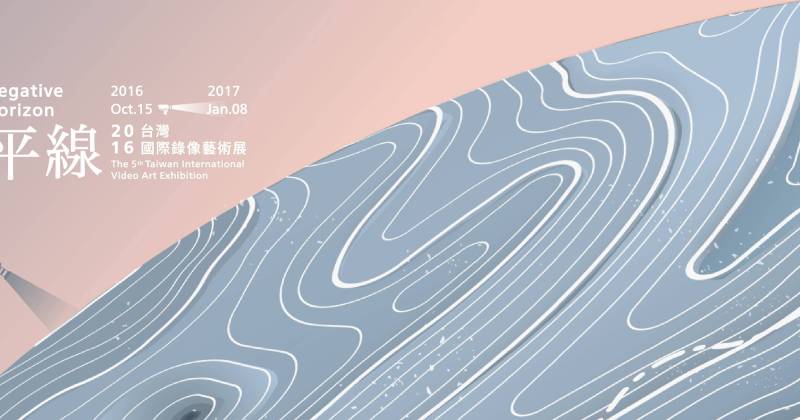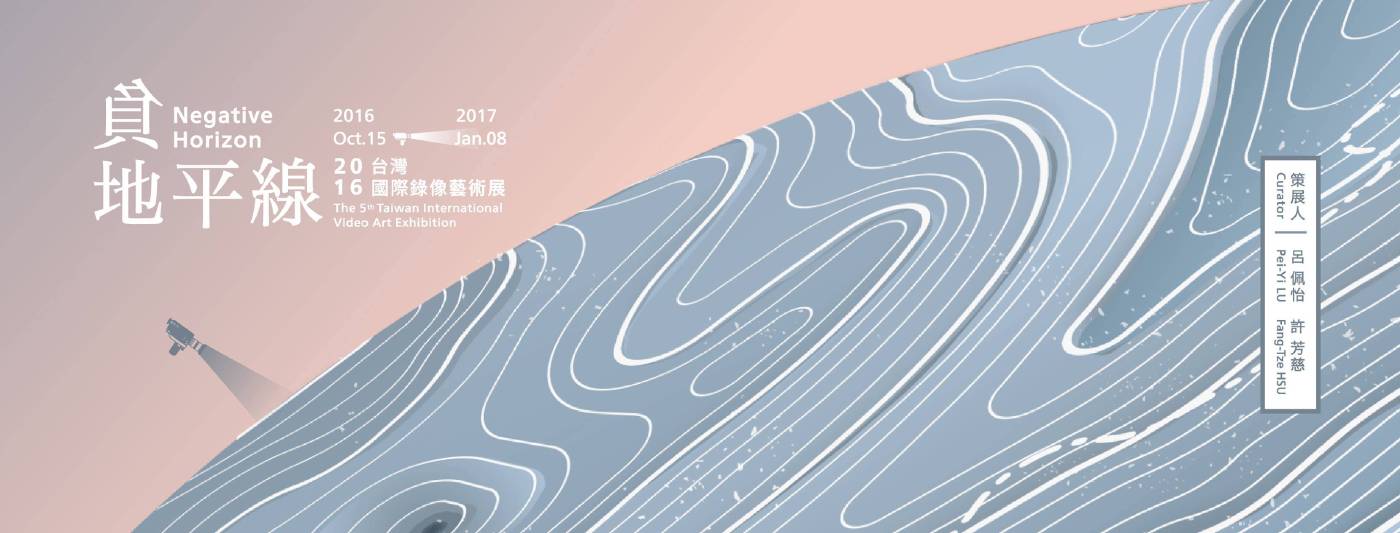鳳甲美術館
【負地平線】2016台灣國際錄像藝術展

-
展期
日期:2016-10-15 ~ 2017-01-08
-
地點
台北市北投區大業路166號11F
-
參展藝術家
高重黎 、多明妮可‧貢札雷斯‧佛斯特(Dominique GONZALEZ-FOERSTER)、高山明(Akira TAKAYAMA)、納達弗‧阿索爾(Nadav ASSOR)、張乾琦 、蒂塔‧薩利娜與伊旺‧安米特(Tita SALINA & Irwan AHMETT)、楊俊 、王虹凱 、喬恩· 凱茨(Jon CATES)、劉吉雄 、Futoshi MIYAGI 、阮純詩(Trinh-Thi NGUYEN)、露西‧戴維斯(Lucy DAVIS)
-
展覽標題「負地平線」一詞,藉法國哲學家保羅‧維希留(Paul Virilio)探討速度-影像-現代性暴力系列書籍之一的L'Horizon négatif (1984),批判性地將哲學意象的「負」置換為影像載體之底片負像,探問視覺上的平坦滑順,究竟象徵著效率的無阻,還是欲求的深淵?以物質性、身體感與在地脈絡詮釋此展覽標題。Negative既有消極、否定與陰性意象,也是底片的物質性與時間感,託寓著影像在載體上顯影的過程。Horizon是天與地之間動態的「界」,依據天候環境與觀者視角而異,將Horizon從地平線與界限延伸至視域,乃至全球化之跨國移動中可能的臨時集結。當Negative與Horizon結合成為此次台灣國際錄像展標題,「負地平線」指涉那些「正(常)可視」之外、之後、之下、之反面…的景況,這些不可視迫待可視,尤其當跨國/跨界移動逐漸成為日常生活之必須,移動是拓展了我們的眼界、認識與感受,抑或透過合理化的流動蒙蔽潛在的剝削?
2016年台灣國際錄像藝術展「負地平線」將從不同面向緊扣「移動」,包括邀請與國際徵件共計27位國內外的藝術家(團隊)參與:台灣影像藝術先驅高重黎以克里斯‧馬克1962年的經典散文電影〈堤〉為對話對象,批判影像、帝國與資本勾結;多明妮可‧貢札雷斯‧佛斯特(Dominique GONZALEZ-FOERSTER)與楊俊,分別從王家衛的香港與楊德昌的台北,淬煉出亞洲新興都會的異化與游移;然而,同樣以電影為美學援引,錄像藝術家程然則以467分鐘的動態影像向電影致敬;喬恩· 凱茨(Jon CATES)挪用1930年代西部電影的影像敘事,以當機美學介入屏幕政治,使潛在於美國國族主義中集體無意識的暴力顯影;Futoshi MIYAGI、阮純詩(Trinh-Thi NGUYEN)與露西‧戴維斯(Lucy DAVIS)也同樣以動態影像檔案為命題,藉敘事鬆動影像形式,重組影像與記憶政治的關聯。
面對失去歷史的記憶,紀錄片導演劉吉雄的關懷,逼迫我們反思冷戰結構下遭遺忘噤聲的澎湖難民營;王虹凱將日據時期由「蔗農組合」填寫的「甘蔗歌」為載體,用工作坊集結,重新連結受迫的身體經驗;這也呼應印尼雙人組蒂塔‧薩利娜與伊旺‧安米特(Tita SALINA & Irwan AHMETT)長期關注印尼非法移工的世界勞動經歷,強調結構暴力下受迫者的能動性;張乾琦以自身的移動現實對應著兒女出生前後,於其所到之處採集的搖籃曲,私密揪心呈現由攝影作品組成逐格動態影像。納達弗‧阿索爾(Nadav ASSOR)在以色列與巴勒斯坦邊境,進行的地景繪測影像動員;高山明(Akira TAKAYAMA)為北投量身打造的聲演旅途〈北投異托邦〉,此兩位藝術家作品期盼以觀者的身體經驗與記憶完成影像的動感/感動。
「負地平線」展覽著眼於影像與其物質性的敘事,藉著底片膠卷、機器、物件、文獻等裝置,在放映之外,策動視覺、觸覺、身體感知乃至記憶。期盼透過藝術家之眼及各種機械性之外的動態影像,使個人生命敘事與當代全球社會共享的歷史現實顯影。
Starting with this inquiry based on the epistemology of image, Negative Horizon, the 5th Taiwan International Video Art Exhibition (2016 TIVA), explores how the historical trajectory of image movements comes about and intertwines with the contemporary experience of displacement. The venue of 2016 TIVA is located in Beitou District, which is a starting point and will serve as a referencing point representing the compressed hundred-year history of movement and migration taking place in Taiwan. Setting off from Beitou, 2016 TIVA tries to connect this specific locale to the whole world, summoning the emotive agencies of the audience.
The title of the exhibition—Negative Horizon— was derived from the title of Paul Virilio’s book published in 1984. In L’Horizon négatif, as a philosopher, Virilio discusses the violence caused by the newly-formed trinity of speed, image and modernity. By replacing the philosophical articulation of negatives with the material history of photographic film, 2016 TIVA attempts to question what the smooth visual experience symbolizes, wondering if it represents certain kind of efficiency without obstacle or the abyss of unsatisfied desire. The term “negative” is a word with multiple meanings, referring to passiveness, negation, femininity as well as an essential vehicle to mobilize image— the celluloid film which has played a vital role in the materialized process of appearance. The term “horizon” embodies the dynamics within the liminal space between the heaven and the earth, which is conditioned by the correlation between the perspective of the spectator and her/his circumstance of the surroundings; this term also bringing a sense of mobility embodied by the economic and political exiles, which result from contemporary geopolitics in conjunction with the disruption of citizenship caused by human trafficking beyond political borders. Negative Horizon thus stands for those invisible scenes that dwell opposite to, behind, or underneath the normative visibility, especially when these transnational/transregional voyages gradually become a part in the lives/life of the modern time, expanding our vision, understanding and feelings and at the same time transformed into underlying and legitimized exploitation.
2016 TIVA intends to follow the theme of the exhibition— “mobility”—from different dimensions closely. Twenty-seven foreign and domestic artists/artist groups, including the invited ones and the finalists from the international open call, participate in this exhibition. What follow are the brief introduction of some artists and their works:
KAO Chung-Li, the pioneer of Taiwanese image art, converses with La Jetée, Chris Marker’s classical omnibus film produced in 1962, via his work, which criticizes the collusion between image, the empire and the capital. Dominique Gonzalez-Foerster and YANG Jun separately but coincidently choose two Asian directors—Edward YANG and Kar-Wai WONG—to deal with the alienation and diaspora in the young metropolises (YANG’s Taipei and Wong’s Hong Kong). Similarly, dealing with the aesthetic of films, CHENG Ran, the video artists, composes a 467-min moving image to pay his attribute to films. John CATES hijacks the image narration in the western films, interrupting the screen politics with glitch art in order to show the violence in the collective unconscious of American nationalism. Futoshi MIYAGI, Trinh-Thi NGUYEN, and Lucy DAVIS also support their theses with moving images files. With the narration loosening the formation of image, they reconstruct the relationship between image and memory politics.
Coping with the topic of historical amnesia, Asio Chi-Hsiung LIU, a documentary director, forces us to reconsider the forgotten and muted Penghu Vietnamese Refugee camp under the Cold War structure. Hong-Kai WANG connects people via workshops to reconnect the oppressed physical experience in the matrix of the “Sugarcane Song”, which was composed by Sugarcane Farmers' Association during Japanese Occupation. Tita SALINA and Irwan AHMETT, Indonesian artists, have concerned the Indonesian illegal migrant workers’ working experience worldwide, emphasizing the mobility of the oppressed under the structural violence. CHANG Chien-Chi compares his migration reality with the real condition before and after his children were born. Following his navigation and trajectory, he has collected lullabies wherever he has been. His photos interweave his collection of lullabies, giving birth to the stop-motion moving images with his personal feelings. Nadav ASSOR mobilizes images on the border between Israel and Palestine by surveying and mapping landscape. Akira TAKAYAMA presents Beitou Heterotopia,an intersubjective tour performance perceived by our auditory sense with the local specificity of Beitou. Both TAKAYAMA and ASSOR’s works harbour the anticipation that audience can accomplish the art pieces with their memories and physical experience.
From the negative film, objects, archive, and installation, the exhibition attempts to interrogate the subject of “mobility” from various aspects as an effort to mobilize the feelings of visuality, tactility, corporeality, and even memory. The exhibition engages with artistic visions and their corresponding trajectories in engaging the mechanical motion pictures to expose a historical reality shared by global communities.
推薦展覽
view all鳳甲美術館
【〈I Enjoy Being A Girl〉Screening & Talk】〈I Enjoy Being A Girl〉符芳俊作品播映暨座談
日期:2025-03-09 ~ 2025-03-09|台灣,台北市
